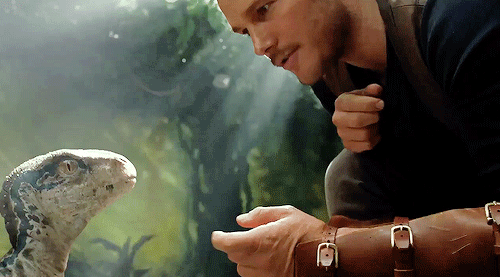The premier of the blockbuster film Jurassic World (2015) was met with anticipation from a global audience that was eager to take a first look at the latest installment of the Jurassic Park franchise. The movie follows two brothers as they visit the grand reopening of Jurassic World, a dinosaur theme park, and encounter protagonists Claire Dearing (a workaholic operations manager) and Owen Grady (U.S. Navy veteran and ethologist). What takes Jurassic World one step further, however, is that the film introduces the idea of domestication as Grady is seen training a squad of Velociraptors with the intention of learning more about their intelligence and ability to be commandeered. Despite being wild animals, Grady was able to tame them enough for them to follow his orders and view him as someone to be followed as opposed to eaten. Grady formed a particularly special bond with a Velociraptor called Blue, who differed from the rest of the pack in the sense that it showed greater signs of curiosity, concern, and hyper-intelligence.

Although dinosaurs have long ceased to exist and no longer roam the earth, the need to domesticate wild animals is still very much a reality as humans continue to take in feral animals and try to tame them by conditioning their behavior enough so that they grow accustomed to living alongside people. In recent years, for example, foxes have become an area of interest as some groups have come to produce foxes with dog-like characteristics. For decades, they have been bred for certain desirable traits (such as friendliness toward people) and have exhibited changes in their genetics that could be attributed to this selective breeding. In the case of Jurassic World (2015), Blue would have been selected for its desirable traits (friendliness towards Grady) and used to create a line of domesticated dinosaurs that would have been easier to train, with the potential for something greater several generations down the line. This story is reminiscent of the way in which dogs were first domesticated, which grew from a partnership in which both humans and dogs benefitted mutually.

Works Cited
K. Kris Hirst (2019). Dog history: How and why dogs were domesticated. ThoughtCo., April 25: https://www.thoughtco.com/how-and-why-dogs-were-domesticated-170656
Poor, William. “We Met the World’s First Domesticated Foxes.” YouTube, Verge Science, 11 Sept. 2018, youtu.be/4dwjS_eI-lQ.
Trevorrow, Colin, et al. Jurassic World. Universal Pictures, 2015.
